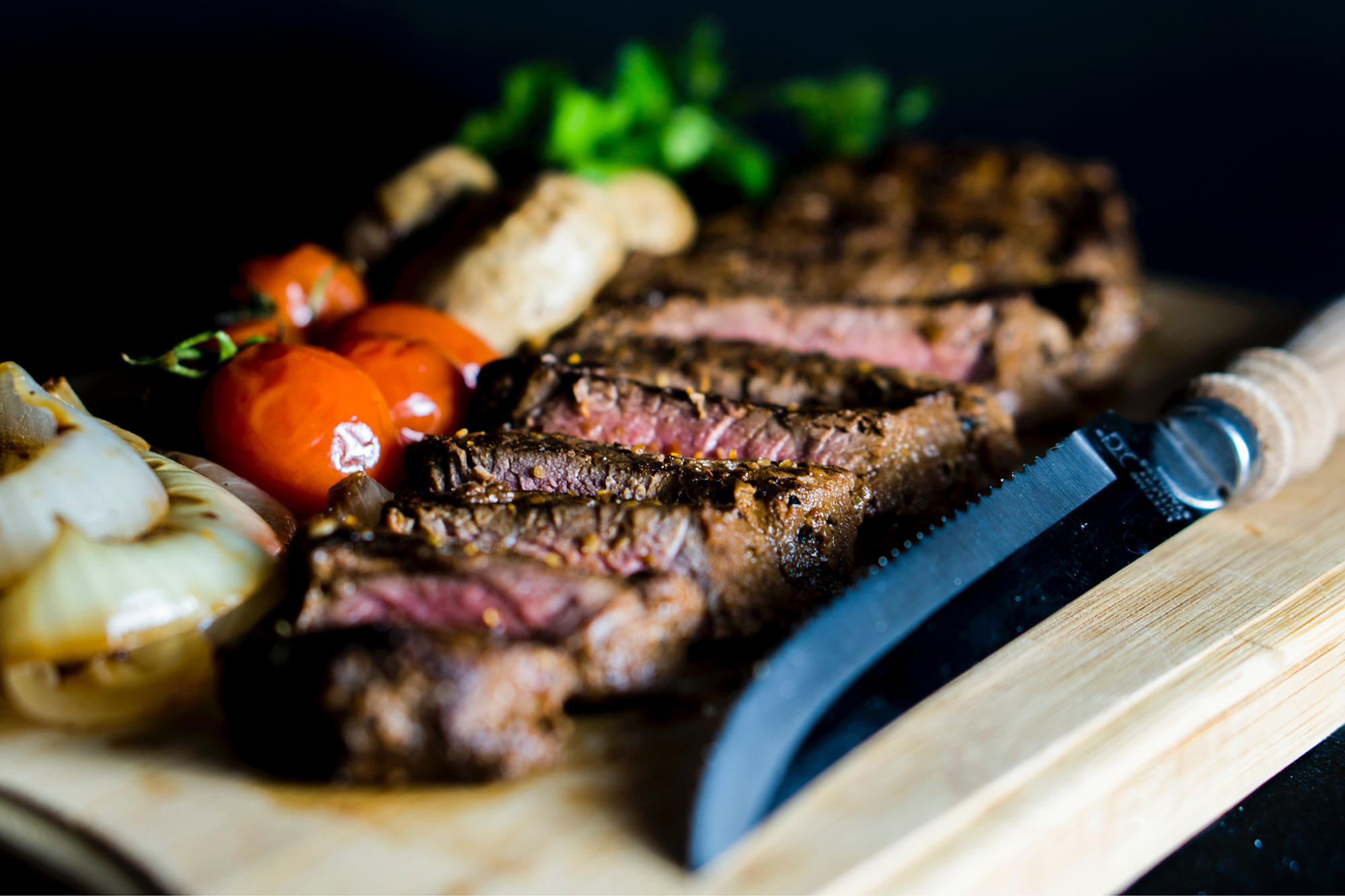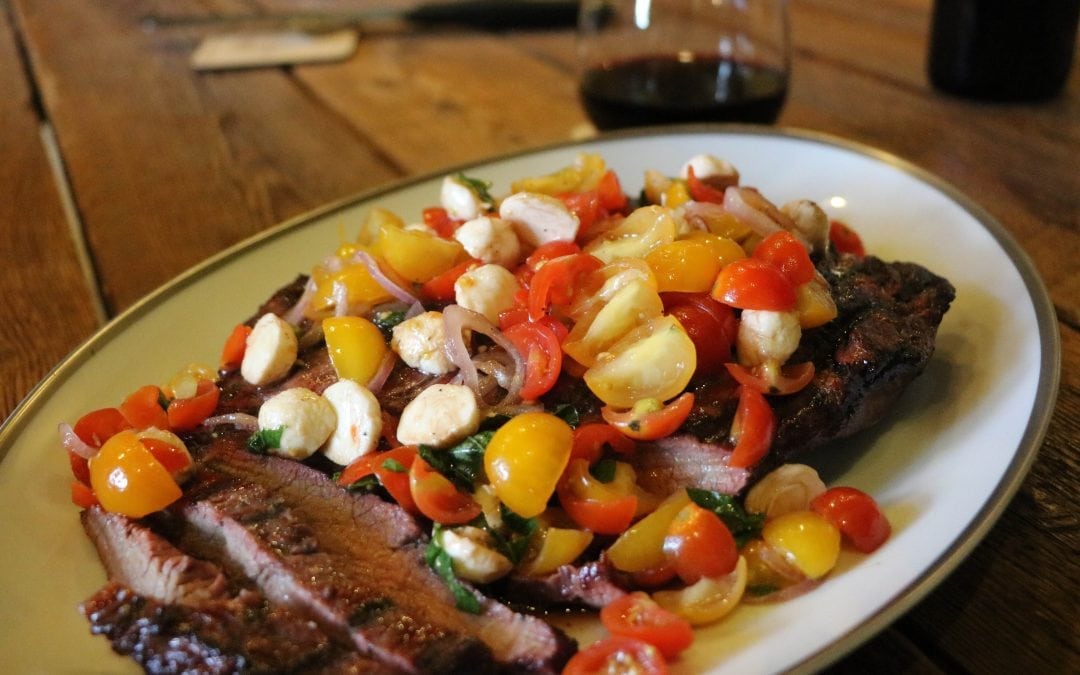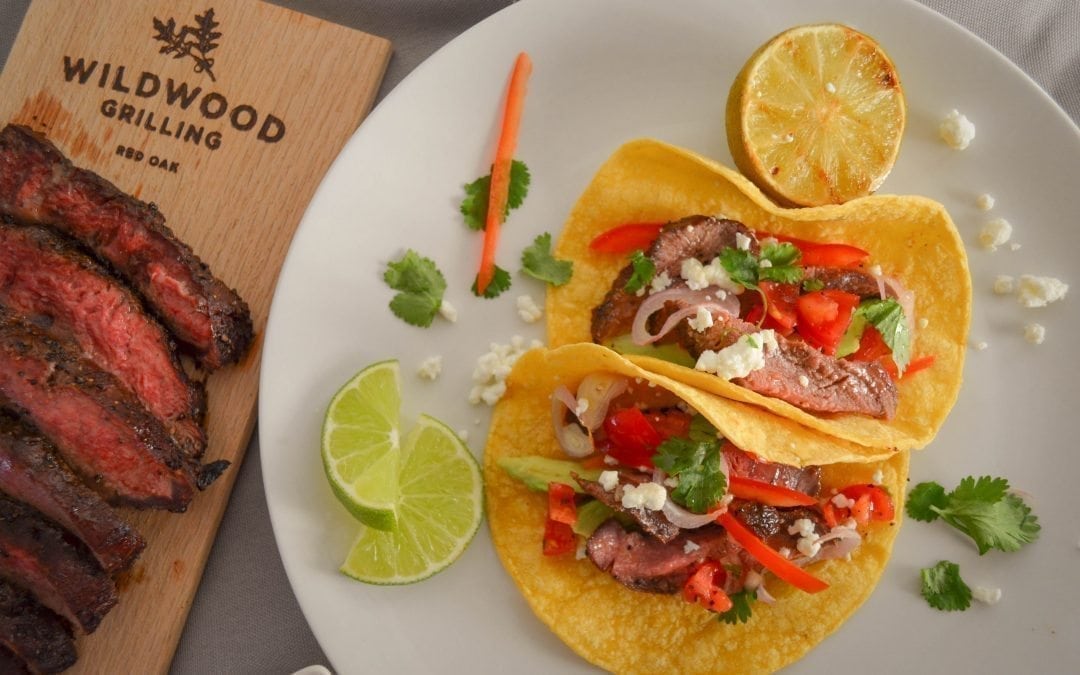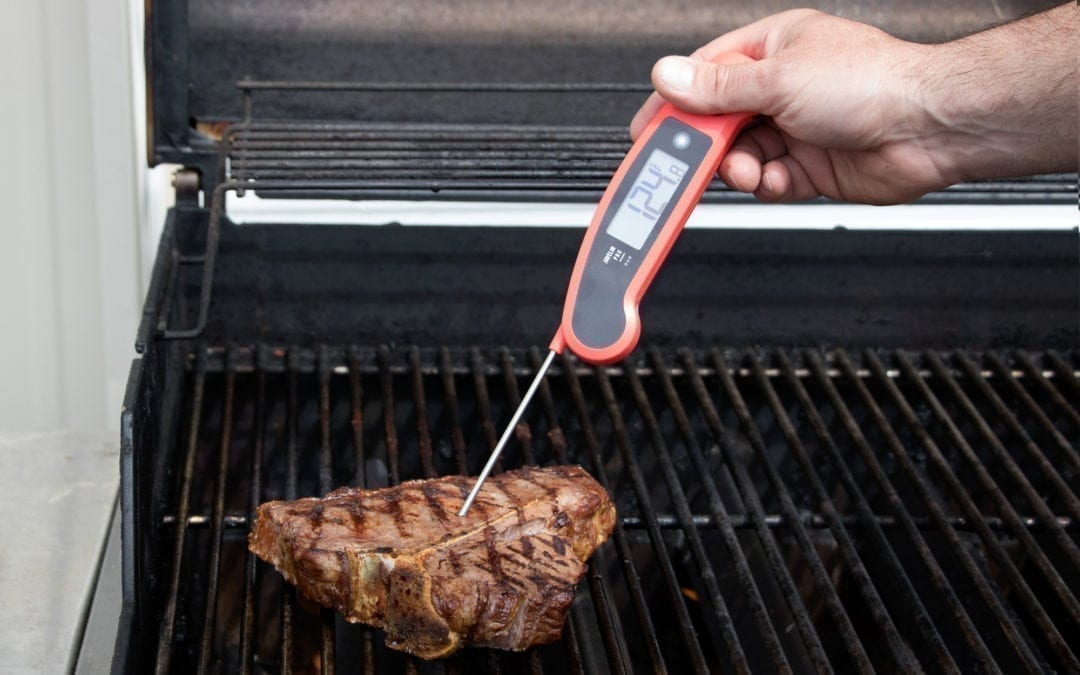Is there one ultimate steak for putting on the grill that is a cut above the rest?
Dedicated grillers will always be loyal to their tried, true, and trusted favorite. To narrow it down we should determine what is most important to you. Things like fat content, tenderness, marbling, and price are all factors to consider when shopping for steak to grill.
Fat Marbling
Regardless of what cut you come across, quality of marbling will tell you the most about how your steak will eat. Marbling refers to the tiny visible flecks of fat and the more frequent and evenly distributed these are, the more tender and juicy the steak will be. As the meat cooks these flecks of fat melt inside the steak and greatly contribute to overall tenderness, flavor, and juiciness. For example, prized for its exceptional marbling, the streaks of fat in Japanese beef is impressively visible.
USDA Grading
Next, consider the grade of beef you choose. The USDA classifies beef as select, choice, and prime. These different quality grades will reflect the flavor and tenderness you can expect out of the meat. Prime being the highest quality, only accounting for about 2% of all graded domestic beef and is usually sold to restaurants and hotels. Choice grade is still high quality, but will be less tender and flavorful than prime. Select cuts will be the leanest and will need the most care during cooking to create a juicy, tender final product. Grading is determined by multiple factors including the age of the animal, visible marbling, and physique. Animals with broader backs and loins tend to provide more tender meat.
Cuts of Beef
Once you are educated on how a good steak should look, you can look at any variety of cuts. Strip steaks are a great grilling steak, although at the higher price end. They have a uniform shape, cook evenly and can be cut to a variety of thicknesses.
Ribeyes are delicious due to their fat content although they can also be a little trickier to cook. The eye of the steak is capped by the spinalis which is exceptionally tasty and tender. This adds another element that few other steaks have.
Less common steaks like flank are fantastic for grilling. They are also easy to cut to a consistent size and are fairly affordable. I find Flank steaks benefit by either marinating or jaccarding. Jaccarding can be achieved with a tool that essentially pierces the meat many times over with tiny needles that help tenderize it.
Bavette steaks are also a very affordable cut off of the sirloin. The flavor is fantastic but they tend to have lesser amounts of marbling, and so need attention when being cooked.
Technique
Regardless of your steak choice, grilling technique is key. It is also important to cook it to the temperature you like so always know that going in. A meat thermometer is a great tool to help you get it right. If you’re a more seasoned griller then just give it a poke.
Our Favorite Steak Recipes
Here are some of my favorite steak recipes and a piece I wrote about my altered skepticism of reverse searing.
Happy Grilling!
Mesquite Smoked Flank Steak with Wine Sauce Recipe
Red Oak Planked Coffee Rubbed Steak Tacos
Cedar Wrapped Beef Shoulder Tenders with Grilled Potato and Chiles
Why Should You Reverse Sear a Steak?
Matt worked his first kitchen job in the country of Malta at the age of 15. He has worked as a restaurant Chef in Arizona, Maine, Spain, the UK, Oregon and finally North Idaho. Now the Executive Chef at Wildwood Grilling, he thoroughly enjoys his day job.










